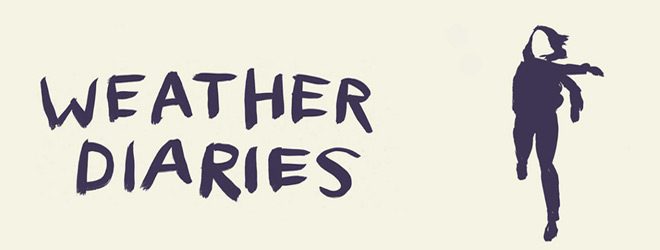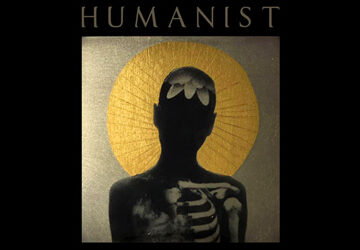
Formed in 1988, in Oxford, England, Ride, with its music, has always been hailed as innovative and highly influential, often regarded by or compared with many of their bracket mates like Oasis (“Champagne Supernova”), Stone Roses (“She Bangs the Drums”), Catherine Wheel (“Sparks Are Gonna Fly”), and The Charlatans (“The Only One I Know”) and older icons operating in the same Alternative Rock sonisphere, such as The Cure (“The Hanging Garden”) and Sonic Youth (“Sugar Kane”). The quartet of Mark Gardener (vocals, guitar), Andy Bell (vocals, guitar), Steve Queralt (bass), and Laurence Colbert (drums) had an initially prolific start in the 1990s, releasing four studio albums in a span of only six years, from 1990’s Nowhere to 1996’s Tarantula and spawning now recommendable classics that include “Seagull,” “Vapour Trail,” “Taste,” “Chrome Waves,” “Making Judy Smile,” “Moonlight Medicine,” and “Deep Inside My Pocket.” However, despite its promising trajectory in that decade, its trail eventually vaporized, brought about by stylistic differences that typically afflicted members of bands. Ride broke up in 1996, causing its members to move on to pursue separate endeavors.
Fortunately, and to the delight of Ride’s longtime fans and enthusiasts of Shoegaze music, great news came in 2014: Gardener, Bell, Queralt, and Colbert have all reunited for a series of European and North American shows. Nonetheless, the ultimate treat was the announcement early this year of a new album. Titled Weather Diaries, it followed the heels of its predecessor after twenty-one years! This is the reason there is really so much anticipation for and high expectation from Ride’s forthcoming new offering. Reassuringly, it does not disappoint. It collectively carries the sonic genes of its progenitor – a delectable concoction of Shoegaze, Noise Rock, Grunge, and everything else that sounds delightful in the entire Alternative Rock genre.
Slated for release on June 16, 2017 via Wichita Recordings, Weather Diaries opens grandly and dramatically with the slow, cinematic-landscape buildup of “Lannoy Point,” whose undulating introductory synthesizer melody leads the bubbling Cure-sque jangly guitars and cool vocal wash onto upbeat territory. This is followed immediately by another engaging track, the equally angular and shimmering “Charm Assault,” taking the listener back to the hi-octane, pre-Nowhere beginnings of the band. “All I Want” is a different kind of heavenly beast, owing to its sampled Doo-Wop-inspired vocal harmony, synth flourishes, as well as Pop and New Wave sensibilities. Then, “Home Is a Feeling” and the ensuing seven-minute title track slow down the mood; lyrically complementing their nostalgic sounds that hark to Ride’s Pink Floyd–reminiscent, Psychedelic wall excursion during its Carnival of Light era.
Slowly spreading and eventually exploding like a pillbox of shiny, metallic Pop shards and splinters, “Rocket Silver Symphony” opens Weather Diaries’ probably flipside. The song’s ’90s-Britpop elements prepare the listener, in a seeming juxtaposition, to the grungy Alternative Rock stompers that follows it – “Lateral Alice” and “Cali” – both reminders of Ride’s having been one of the flag-bearers of the “wall-of-sound” fuzzy guitar in the decade when the instrument was regarded as Mjölnir or Excalibur, wielded by every Rock guitarist like a badge of honor and pride, or better yet, weapon for sonic explosion.
Functionally an aural sketch, “Integration Tape” serves as a prelude to the album’s last two tracks – the rustic and wistful “Impermanence,” whose nostalgic sentimental weight puts it in the league of similarly somber songs like U2’s “Bad,” The Chameleons’ “Tears,” and The Church’s “Metropolis.” Finally, the shimmery, ’60s Canterbury Pop–evoking ballad “White Sands” aptly closes Weather Diaries like a proper book cover, ending Ride’s entries for the last two previously uncharted decades. Hopefully this is just the beginning of another chapter in Ride’s musical diary.
Weather Diaries is worth the twenty-one years wait. Its broad-spectrum contents truly covered and encapsulated the band’s lost decades. Ride may have fallen off the Alternative wagon long ago, but its return and latest musical outputs compensated well for its absence. Here is a suggestion – read the confessions and listen to the diaries, and discover and rediscover Ride’s weather-tempered music all over again. It is like the moptop shoegazers never left the scene at all. CrypticRock gives Weather Diaries 5 out of 5 stars.






No comment